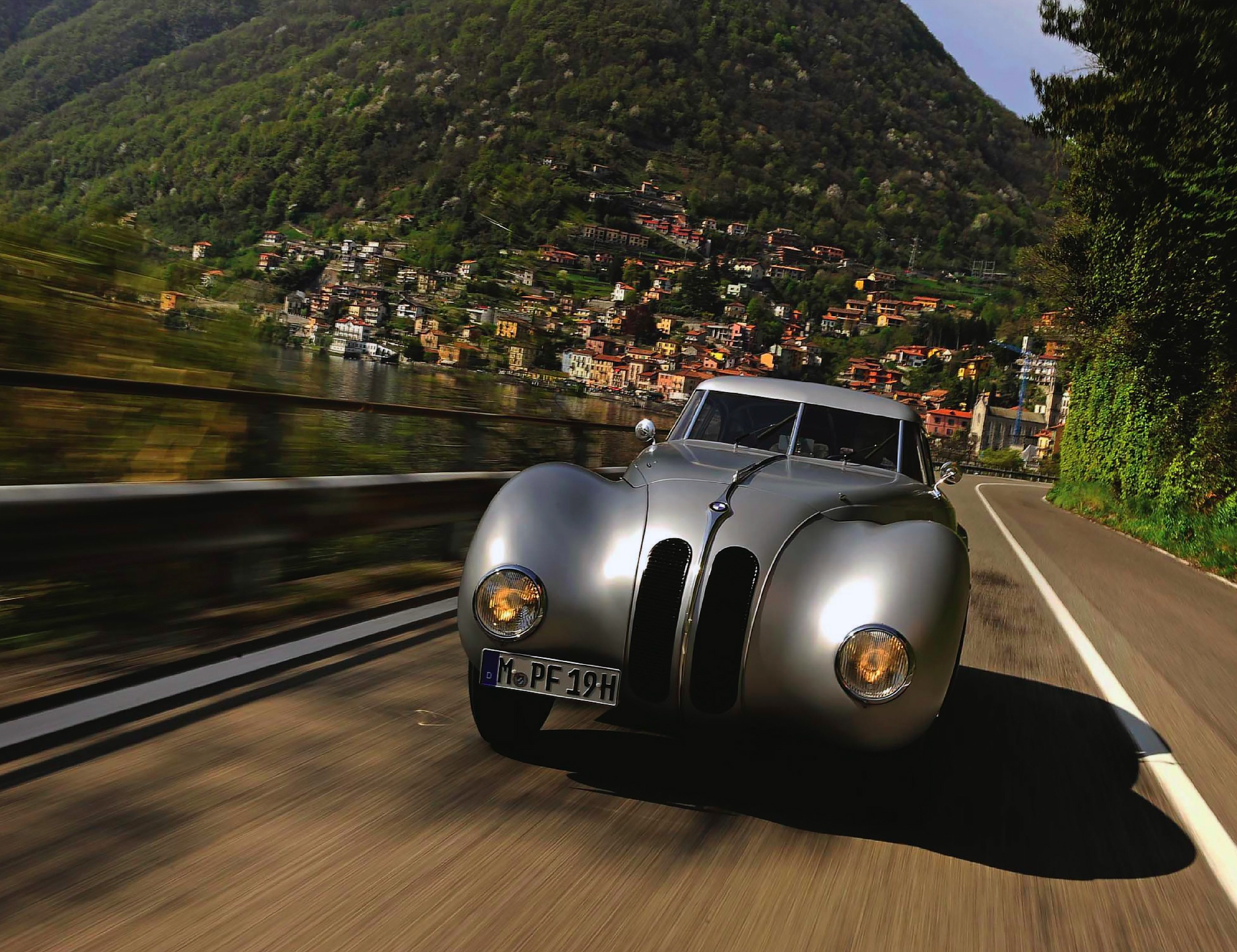
Back from the dead. Mick Walsh drives the exacting recreation ofthe dramatic BMW 328 Kamm Coupe built for BMW’s 1940 Mille Miglia sortie but destroyed decades ago. Photography by Gudrun Muschalla. It’s hard to imagine running any motor- sport competition – let alone such a prestigious road race as the Mille Miglia – during wartime. In April 1940, Operation Weserubung was under way, with Germany invading Denmark and Norway, and the Royal Navy had already sunk eight of Hitler’s destroyers in the Otot Fjord, yet amazingly Adolf Huhnlein of the National Socialist Motor Corps (NSKK) and the Italian Fondo Assistenza Sanitaria Integrativa had agreed that the 1000-mile challenge should go ahead. Maybe the plan was to divert popular attention from the grim conflicts further north, but BMW was committed to the surprise event long before the date of 28 April and the one-off triangular course from Brescia to Mantova, across to Cremona and back was announced.
Five streamlined 2-litre 328s were prepared and extensively tested before heading over the Alps to BMW’s base camp in Castiglione. Three roadsters were entered by the NSKK, while two contrasting coupes were run by the factory – the 1939 Le Mans car for German teammates Fritz Huschke von Hanstein and Walter Baumer, and an intriguing new prototype for Italians Count Lurani and Francesco Cortese. With its body developed by Swiss-born aerodynamics wizard Professor Wunibald Kamm and built on a wheelbase extended by 7.9in, the hastily finished machine had proved much more stable at high speed on the Munich-Salzburg autobahn, but the finish was crude compared to the other Touring-bodied team cars. Their high-compression engines were tuned to 135bhp, but the Kamm Coupe was fitted with a higher axle ratio of 3.2:1.
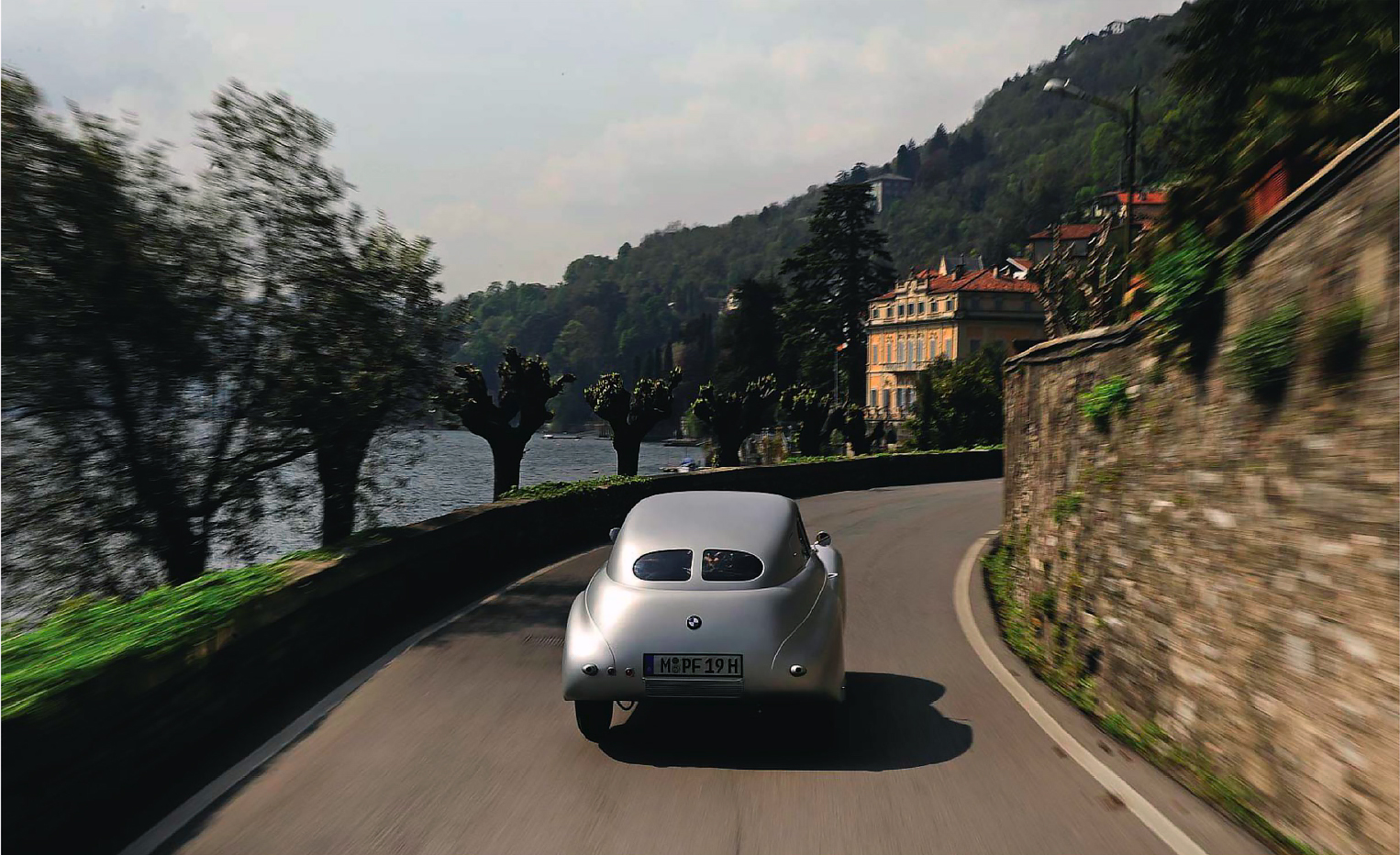
Von Hanstein had extensive experience of racing aerodynamic coupes – including Adler and BMW at Le Mans – although he had a reputation for a heavy right foot. During practice on open roads, he blew up the Touring Coupe and mechanic Willi Huber had to install a fresh unit overnight. Confident about a class win, the German team quickly found that it was a front- runner among the hot works Alfa 6C-2500 SS coupes. From the 6:40am start, von Hanstein took the lead and drove most of the 934 miles solo – only handing over to Baumer shortly before the end of the 8 hrs 54 mins contest.
The Germans were jubilant to win by more than 16 mins from the fastest Alfa Romeo of Nino Farina and Paride Mambelli, much to the annoyance of II Duce. The immaculate team in white overalls with NSKK badges (only von Hanstein sported a large SS insignia) certainly appeared to be a propaganda exercise, particularly because only the Kamm Coupe with its experienced Italian team failed to finish. Lurani and Cortese gave their best – and looked possible winners as they shadowed von Hanstein until the closing stages – but an oil problem frustratingly caused engine failure on lap seven of nine. Post-race investigations revealed wrongly installed piston rings that led to a total loss of lubricant.
The Mille Miglia Kamm Coupe survived the war, hidden away in the garden of Eisholz Castle near Starnberg where the BMW experimental department, under Rudolf Schleicher, was also headquartered. Stored in a gully and camouflaged to avoid capture by the Allies, the car was recovered by Ernst Loof in 1945 and became the daily driver of the former head of BMW’s racing department and Veritas founder.
When Karl Kling’s own 328-based special wasn’t ready to race, the German ace competed with the Kamm Coupe at Hockenheim in ’47. The car, by then with spats over both the front and rear wheels, was a familiar sight at Veritas’ Nurburgring-based premises, but it was looking decidedly tatty. Loof eventually sold the 328 to a local building contractor in Bad Godesberg in 1950, but sadly the famous car was subsequently scrapped after a road smash.
Like so many of the fascinating K-car prototype designs of Professor Kamm, all that remained were a few patents and historic photographs, but there was renewed focus on the 1940 Mille Miglia after the formation of BMW’s Mobile Tradition heritage wing in 1994.
First, the winning Touring car was acquired from American Jim Proffit and returned to the factory to join the ex-Michael Bowler roadster, chassis 850032, but-more ambitiously – plans were also discussed to recreate the Kamm Coupe. All of the design drawings had been lost during the war, but, thanks to a private photo- graph-collector based in Munich, a rich record of the 1940 race was found including rare colour. Better still, the set even included shots illustrating the unique tubular body construction.
The images were then taken to the computer experts in BMW’s design department, who totally embraced the challenge of helping to replicate the car. The scanned images formed the basis of a 3D geometry program and, once key measurements such as wheel diameter, headlamp size, door handles and ‘propellor’ badges had been dialled in, the body shape projections began to take form. Each photo provided a fresh series of measurements and, once the designers felt confident about the virtual solid model, they used the high-tech reference to start generating data for a five-axis milling machine. From this, a full-sized model was produced – cut from a massive block of high-impact foam.
From top: distinctive low lights, long bonnet with minimal louvres and aero- style split ‘screen; tubular frame was fitted inside refabricated bodyshell; panelfit by GroBe’s team was better than original
The next stage was to commission a 328 specialist to stretch an original chassis and to start fabricating a spaceframe using template references from the period photographs and measurements from the freshly formed shape. The project was put on ice as priorities switched to revamping the factory museum, but thankfully one of the directors gave the go-ahead to remake the Kamm car’s Elektron skeleton for an exhibition on lightweight design. Aluminium was used for the reconstruction but the finished frame – created by a local Munich firm – closely matched the 30kg (661b) weight of the original.
Although the display spaceframe was never intended for a complete car, the initial design brief was never forgotten. Another step forward was initiated as part of a student project at the school for automotive industry master craftsmen in Leipzig. Moulds were produced from the foam buck in co-operation with BMW’s nearby manufacturing facility, and slowly the spaceframe was clad with aluminium panels. The completed skin looked spectacular in unpainted form, and went on display at the plant.
The main catalyst to finally turn the streamliner into a runner was the 70th anniversary of BMW’s Mille Miglia win, when the top brass sanctioned it for the retrospective reunion. The man chosen for the challenging task was foremost 328 artisan Rene Grofie, who had gained key knowledge of the 1940 team cars through his restoration of the Touring Coupe and Mille Miglia roadster. The full-scale model was transported to Grofie’s Wusterwitz-based workshop in Brandenburg, where a glassfibre-reinforced mould with wooden inner sections was made.
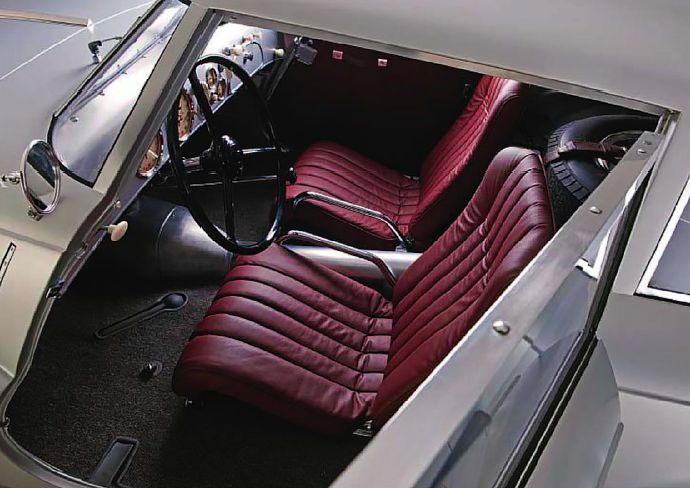
Once he was satisfied with the shape of the body, it was sectioned down the middle and an alloy frame was constructed to fit the substructure. A second set of aluminum panels was supplied by the Meisterschule, and Grofie’s craftsmen meticulously fitted them around the new base. Many of the details – such as the door and bonnet hinges – were patented by BMW and original drawings were unearthed in the factory archives that greatly helped the restorer to make the Doppelganger as authentic as possible.
REPLICAS OF THIS TYPE ARE THE FINEST CELEBRATION OF THE PIONEERING TALENT THAT BUILT THE ORIGINALS
Other modifications to the Kamm Coupe made the job more challenging, particularly because the radiator, engine and gearbox were all set further back in the tubular chassis.
In March 2010, Grofie handed over the beautiful finished car to BMW Classic in a special ceremony at the museum, where – together with the roadsters and the Touring Coupe – it was prepared for a return to Brescia.
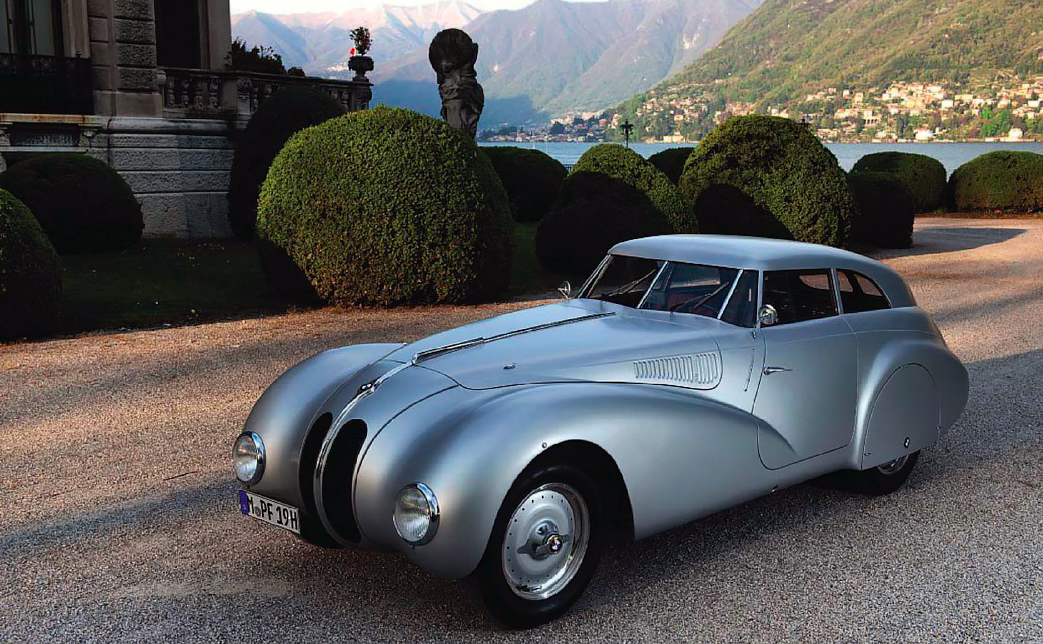
I first saw the recreation in a stunning pre-Mille Miglia display at Villa d’Erba for the famed concours by Lake Como, and adored its style. Captivated by 1930s aerodynamics, I’d previously studied historic photographs of the 1940 Mille Miglia and judged Kamm’s longer streamliner to be the ugly duckling among the sleeker Italian-bodied roadsters and coupe. Yet its long bonnet, flowing wings and low roofline looked sensational in the metal. Comparing the period images with the new car, I’d have guessed that BMW’s designers – maybe even Chris Bangle, who styled the spectacular 2006 Mille Miglia concept – had subtly tinkered with the proportions to make the prototype more graceful and balanced, although everyone maintained that it was authentic in every dimension and detail.
The production 328 roadster would be in my dream collection, and every drive has confirmed its advanced character. The Kamm Coupe, with its longer wheelbase, feels a much bigger car and the closed cockpit amplifies the fruity bark of Fritz Fiedler’s ingenious overhead-valve 2-litre straight-six fed by triple Solex carbs.
Like most of the 328s in BMW Classic’s collection, the Kamm Coupe has been fitted with a later transmission for the tougher retrospective events because the original Hurth designs are too rare and fragile for ham-fisted journalists and celebrity guest-drivers. The busy, free-revving unit works hard when moving away – not helped by the big gap between second and third in the 2002’s four-speed Getrag gearbox – although there’s plenty of ‘go’ through the higher ratios once you’re above 2000rpm. The ride is firm, but the independent front end and stiff tubular chassis mean that there’s limited scuttle shake. The 328’s balance isn’t spoilt by the taller, closed bodywork and, combined with the light, direct steering plus excellent drum brakes, it’s easy to feel confident in the more spacious cabin.
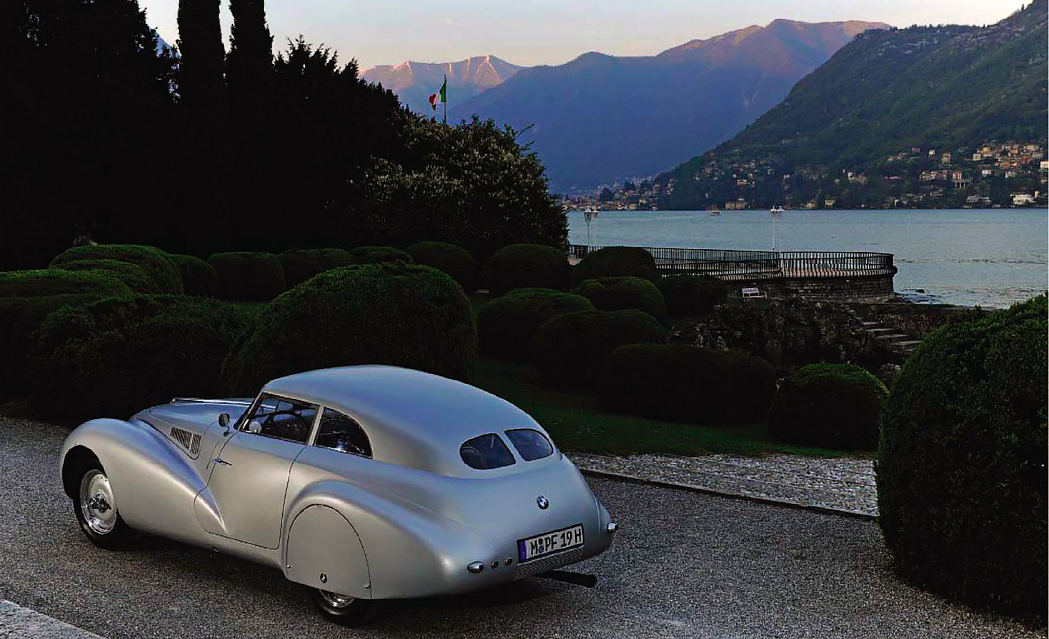
With about 80bhp at 4500rpm in standard tune, the Kamm car is now good for 0-60mph in 10 secs and 100mph. The coupe doesn’t feel as lively as its open stablemates, yet the Italian crew must have felt glad that they were protected from the elements over the nine-hour, 934-mile enduro. The recreated bodyshell is undoubtedly better sealed than the original, because Lurani complained of road dust being sucked through the poorly fitted doors and windows.
Kamm’s design proved faster than Touring coupe on autobahn tests. Above: en route to Italy in 1940; despite being larger, the Kamm is only a two-seater but it weighed 20kg less than the Touring coupe
“The good weather certainly contributed to BMW’s victory,” claimed the popular Count who co-founded the Mille Miglia. “If it had rained, or there had been a strong wind, it would have been a different story.” Clocked at 143mph on the long straights, the tuned Kamm Coupe in particular was susceptible to sidewinds: “It tended to sway off course, which would have made it tricky in the wet – particularly with poor visibility.”
As with Volkswagen’s reconstruction of long- lost Auto Union racers, BMW Classic has to be applauded for reviving this landmark design. Replicas of this type are the finest celebration of the pioneering talent that designed, built and raced the originals. Professor Kamm, who died in 1965, could never have dreamed that his streamliner would be reborn, but I’m sure that he would have been very pi
Thanks to BMW Classic – bmw-classic.com
Kamm’s design proved faster than Touring coupe on autobahn tests. Above: en route to Italy in 1940; despite being larger, the Kamm is only a two-seater but it weighed 20kg less than the Touring coupe
From top: distinctive low lights, long bonnet with minimal louvres and aero- style split ‘screen; tubular frame was fitted inside refabricated bodyshell; panel fit by GroBe’s team was better than original
From top: Prof Kamm; experimental fins;’six’ gave 135bhp in 1940; spacious cabin with 328- style seats but broader across the sill; voluptuous profile was best looking of Kamm’s early designs
Top: the view that most of the 70 entrants on the 1940 Mille Miglia saw of the Kamm streamliner. Above: all of the team cars were driven to the start in Brescia – here they wait at the Italian border
On Kamm
Swiss-born Wunibald Kamm made his name with aviation research during WW1, and was awarded the Iron Cross for improving balloon stability. He later worked with Graf Zeppelin.
In the ’20s, Kamm devised a boxy, front-drive ‘people’s car’ with a compact, lightweight body that impressed Ferdinand Porsche. In 1930, the 37-year-old Kamm founded the FKFS institute for motor-vehicle development. There, with fellow aerodynamicist Baron Reinhard Konig-Fachsenfeld, he created the famous ‘K-tail’.
BMW gave Kamm the go-ahead to produce the first K project on a 335, and tests were so encouraging that he was commissioned to build a 332 limo with a cut-off rear. Radical open and closed 328 models were wind-tunnel-tested, too. Four K-cars were made, the most slippery being the Mercedes 170-based K2, which, with skirts and rear overhang, recorded a 0.23 Cd. Kamm also experimented with roof-mounted fins, performing crosswind tests by driving past a Junkers Tri-motor parked on the runway. Only the K2 survives, in the Deutsche Museum.
After WW2, in the Allies’ scramble for German scientists, Kamm was first imprisoned in France and then transferred to America to stop the Russians gaining access to his ideas. Based at Wright Field, Ohio, Kamm became bored and built his own house. Diversions included helping Briggs Cunningham with the C4RK but it never raced with tailfins. He returned to Germany in ’55 and was claimed by cancer 10 years later.





